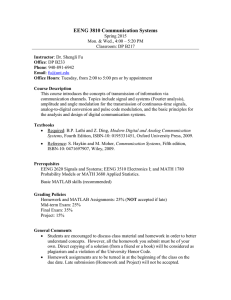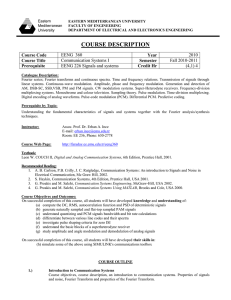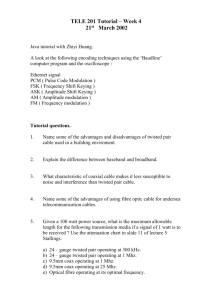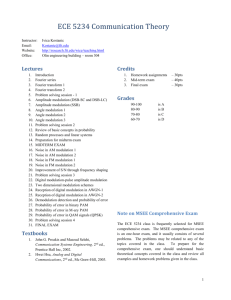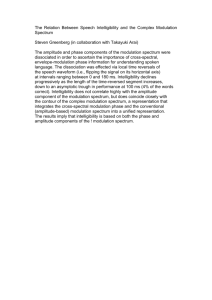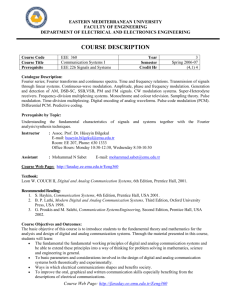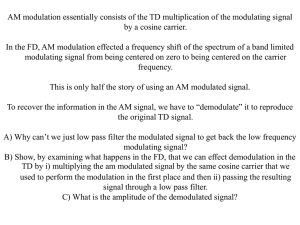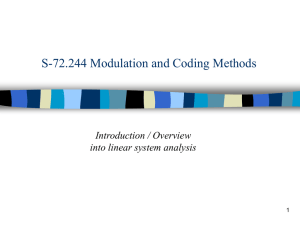Official Course Outline - Department of Electrical Engineering
advertisement
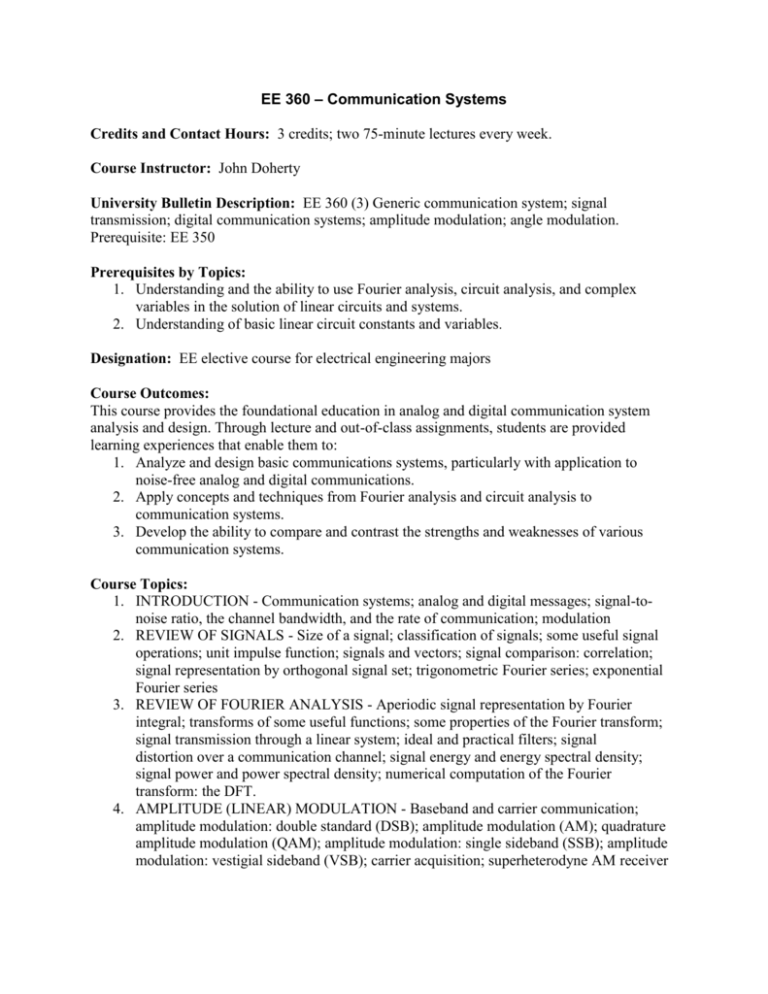
EE 360 – Communication Systems Credits and Contact Hours: 3 credits; two 75-minute lectures every week. Course Instructor: John Doherty University Bulletin Description: EE 360 (3) Generic communication system; signal transmission; digital communication systems; amplitude modulation; angle modulation. Prerequisite: EE 350 Prerequisites by Topics: 1. Understanding and the ability to use Fourier analysis, circuit analysis, and complex variables in the solution of linear circuits and systems. 2. Understanding of basic linear circuit constants and variables. Designation: EE elective course for electrical engineering majors Course Outcomes: This course provides the foundational education in analog and digital communication system analysis and design. Through lecture and out-of-class assignments, students are provided learning experiences that enable them to: 1. Analyze and design basic communications systems, particularly with application to noise-free analog and digital communications. 2. Apply concepts and techniques from Fourier analysis and circuit analysis to communication systems. 3. Develop the ability to compare and contrast the strengths and weaknesses of various communication systems. Course Topics: 1. INTRODUCTION - Communication systems; analog and digital messages; signal-tonoise ratio, the channel bandwidth, and the rate of communication; modulation 2. REVIEW OF SIGNALS - Size of a signal; classification of signals; some useful signal operations; unit impulse function; signals and vectors; signal comparison: correlation; signal representation by orthogonal signal set; trigonometric Fourier series; exponential Fourier series 3. REVIEW OF FOURIER ANALYSIS - Aperiodic signal representation by Fourier integral; transforms of some useful functions; some properties of the Fourier transform; signal transmission through a linear system; ideal and practical filters; signal distortion over a communication channel; signal energy and energy spectral density; signal power and power spectral density; numerical computation of the Fourier transform: the DFT. 4. AMPLITUDE (LINEAR) MODULATION - Baseband and carrier communication; amplitude modulation: double standard (DSB); amplitude modulation (AM); quadrature amplitude modulation (QAM); amplitude modulation: single sideband (SSB); amplitude modulation: vestigial sideband (VSB); carrier acquisition; superheterodyne AM receiver 5. ANGLE (EXPONENTIAL) MODULATION - Concept of instantaneous frequency; bandwidth of angle-modulated wave; generation of FM waves; demodulation of FM; FM receiver 6. SAMPLING AND THE PULSE CODE MODULAION - Sampling theorem; pulse-code modulation; differential pulse code modulation (DPCM); delta modulation 7. PRINCIPLES OF DIGITAL DATA TRANSMISSION - A digital communication system; line coding; pulse shaping; M-ary communication; digital carrier systems; digital multiplexing 8. SOME RECENT DEVELOPMENTS AND MISCELLANEOUS TOPICS Student Outcomes Addressed: O.4.1. Graduates will have an in-depth technical knowledge in one or more areas of specialization. O.4.2. Graduates will have a practical understanding of the major electrical engineering concepts and demonstrate application of their theoretical knowledge of the concepts.
